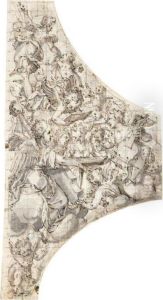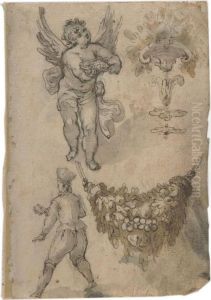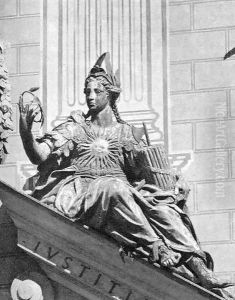Hans Krumper Paintings
Hans Krumper was a notable German sculptor and architect of the late Renaissance period. Born in 1570 in Weilheim in Oberbayern, Bavaria, he was active during a period in European art history that was characterized by a transition from the more rigid forms of the High Renaissance to the dynamic and complex compositions of the Baroque.
Krumper's artistic career is marked by his work in the service of the Bavarian court. He was apprenticed to Friedrich Sustris, a prominent architect and painter, who was instrumental in bringing Italian Renaissance influences to Bavaria. Under Sustris's guidance, Krumper developed a strong foundation in the principles of Renaissance art and architecture. His work was further influenced by the Mannerist style, which was known for its artificial elegance and preference for complexity over the balance and harmony typical of earlier Renaissance works.
The artist moved to Munich in 1592, where he became a master in 1599 and later served as the court sculptor to Duke Maximilian I of Bavaria. This position provided him with significant commissions and allowed him to exert considerable influence on the artistic landscape of the region. Krumper's contributions to the court included not only sculpture but also architectural design, which was a testament to his versatility as an artist.
One of Krumper's most famous works is the mausoleum of Emperor Louis IV located in the Frauenkirche in Munich. His sculptures are characterized by their dramatic expressions and intricate detailing, reflecting the emerging Baroque sensibility. He was also responsible for the design and decoration of various chapels and altarpieces, with a style that showcased a blend of late Renaissance and early Baroque elements.
Krumper's legacy lives on through his contributions to the artistic heritage of Bavaria and Germany. His ability to synthesize the Italian Renaissance influences with the local Germanic traditions resulted in a distinctive style that would pave the way for the full flowering of Baroque art in the region. Hans Krumper passed away in 1634 in Munich, leaving behind a body of work that continues to be studied and admired for its historical significance and artistic merit.


